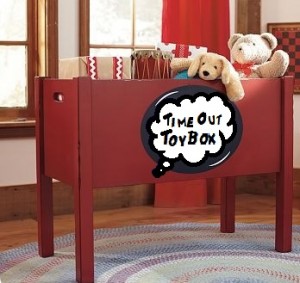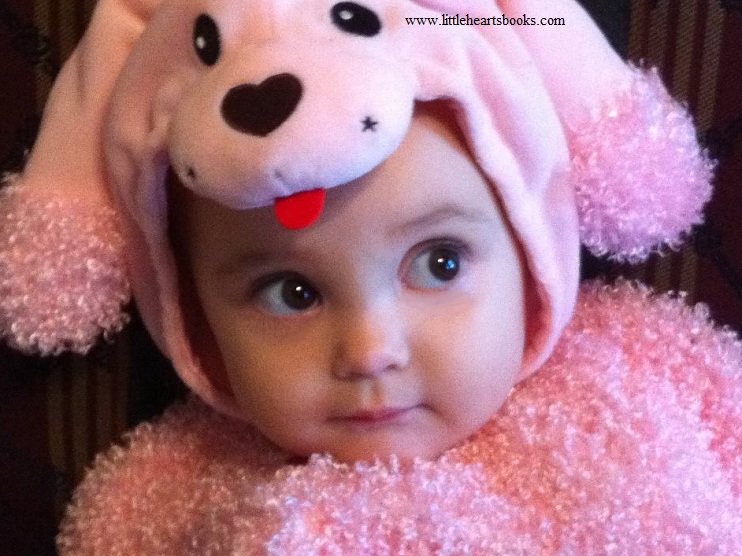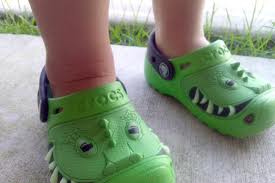Parenting in Public: Toddler Time!
[Reprinted from The Gentle Parent: Positive, Practical, Effective Discipline by L.R.Knost. Whispers Through Time: Communication Through the Ages and Stages of Childhood and Two Thousand Kisses a Day: Gentle Parenting Through the Ages and Stages also available on Amazon and through other major retailers.]
 You’re sitting in a restaurant waiting the prerequisite ten to fifteen minutes for your food to be served, chatting quietly with your spouse and two-year-old, when it happens, that dreaded moment that every parent fears…the sudden switch from table companion to meltdown mayhem when life as you and every patron, staff member, and passerby know it is turned inside out and upside down.
You’re sitting in a restaurant waiting the prerequisite ten to fifteen minutes for your food to be served, chatting quietly with your spouse and two-year-old, when it happens, that dreaded moment that every parent fears…the sudden switch from table companion to meltdown mayhem when life as you and every patron, staff member, and passerby know it is turned inside out and upside down.
That moment is known as ‘Toddler Time’ which is aptly named because it is, in fact, all about time from the perspective of a toddler. That insignificant ten to fifteen minute waiting period for food to arrive is actually eons in toddler time, eons of hunger, eons of boredom, eons of stillness, eons of being expected to act like the adult that they are years and years (eons!) away from becoming. But you really don’t want to be housebound for all of those eons, right? And yet more and more public places are becoming child un-friendly with snarky signs saying they’ll give your child an espresso and a pony if you don’t control them, or charge you extra if you dare to enter their establishment and support their business with your hard-earned money, or even flat out ban you altogether if you bring ‘the beast’ out in public with you!
And what about those hazy, lazy summer days at the park with the laughter of children floating in the air, mommies wearing sleeping babies in their carriers while chatting and keeping eagle eyes on their precious little monkeys dangling from brightly colored jungle-gyms, when the dreaded moment suddenly hits, and all goes quiet as every eye turns toward the poor soul who called out those awful, awful words, “It’s time to go!” The words echo against the lowering sky, which has conveniently decided to threaten rain just to add to the sheer madness of the moment, and then the shrieking begins. In toddler time, an hour at the park is gone in the blink of an eye, and fun things like being strapped into car seats and baths and naps awaiting at home just add insult to injury.
So what’s a parent to do?
Here are a few preemptive tools for your gentle parenting toolbox:
- Gather a few special ‘quiet’ toys and keep them in a Quiet Bag in the car. To keep their novelty value, only get them out when you go into a store or restaurant and let your little one play with one toy at a time until it’s time to go, saving one last special toy for the car ride home. Some ideas for stocking your Quiet Bag are
- felt busy books
- playdoh
- picture books
- white-erase boards
- coloring books
- small, unlined notebooks
- crayons or washable markers
- mini stuffed animals
- small play figures such as superheroes, dollhouse dolls, cars, trucks, etc.
- chunky, age-appropriate puzzles
- Calm-Me-Jar
- Making a habit out of wearing your little one or letting them ride in a cart or stroller while in stores and keeping them happily occupied while secured in a highchair or on your lap when in restaurants are proactive steps that will help prevent issues with running around and getting into things.
- Keeping your little person occupied is always a good place to start, but if yelling or screaming still become an issue, try responding with a whispered question or two. It’s pretty much irresistible for little ones to quiet down to hear what you’re saying, and even better if what you’re saying is super silly…”I think my nose went outside for a walk.” (with a conspiratorial ‘shared secret’ look) “Could you check for me to see if it’s back yet?” (crossing your eyes to see for yourself)
- With the dreaded leaving-the-park issue, try bringing snacks your small one loves, and instead of saying “Time to go!” try saying “Snack time!” and describe the yumminess waiting for them, all the while gently guiding them to the car. Or brainstorm with your little one ahead of time to come up with a fun activity to do after the park like playing a favorite game together or stopping by the library to pick up a new book to read together. The idea is to involve your toddler in the planning so they feel like they have some control over their lives and also to have something fun to look forward to that will help them through transitions (which are always hard for little ones).
- Don’t forget to pack your ‘funnybone’ for a back-up plan! Humor is a powerful parenting tool, and car seats presented as rocket ships to the moon, shared naptimes (parents can always use the extra sleep!) on marshmallow planets, highchair-bound movie directors with mommy and daddy as the actors, and shopping carts cars that continually stall and need to be fixed by their little riders are all inventive ways of keeping little people too busy and happy to meltdown. (Not to mention that these are great ways to reconnect with your little one and remember just how adorable they really are!)
Actively work at avoiding confrontations and meltdowns by giving choices, staying engaged, listening to your child, and paying attention to triggers such as hunger, tiredness, sickness, etc. When our parenting goals shift from meeting needs and guiding actions to controlling our children, they invariably rebel and the battle is on, not a happy circumstance at any time, but especially difficult to handle in public! (And, in the long run, that makes for an ‘us against them’ relationship that sets the stage for an unhappy home, particularly when the teen years arrive.)
Related posts:
Toddlers, Tantrums, and Time-in’s, Oh my!
The Gift of a Strong-Willed Child
Backtalk is Communication…LISTEN
When Children Act Out ~ Reflecting Our Emotions
Bridge Over Troubled Waters~Parenting a ‘Problem’ Child
The Taming of the Tantrum: A Toddler’s Perspective
Practical, Gentle, Effective Discipline
200 Ways to Bless Your Children with a Happy Childhood
When Children Hit~10 Tips for Parents
 Award-winnning author, L.R.Knost, is the founder and director of the children's rights advocacy and family consulting group, Little Hearts/Gentle Parenting Resources, and Editor-in-Chief of Holistic Parenting Magazine. Books by L.R.Knost include Whispers Through Time: Communication Through the Ages and Stages of Childhood ; Two Thousand Kisses a Day: Gentle Parenting Through the Ages and Stages ; The Gentle Parent: Positive, Practical, Effective Discipline ; and Jesus, the Gentle Parent: Gentle Christian Parenting the first four books in the Little Hearts Handbook gentle parenting series, and children’s picture books Petey’s Listening Ears and the soon-to-be-released Grumpykins series.
Award-winnning author, L.R.Knost, is the founder and director of the children's rights advocacy and family consulting group, Little Hearts/Gentle Parenting Resources, and Editor-in-Chief of Holistic Parenting Magazine. Books by L.R.Knost include Whispers Through Time: Communication Through the Ages and Stages of Childhood ; Two Thousand Kisses a Day: Gentle Parenting Through the Ages and Stages ; The Gentle Parent: Positive, Practical, Effective Discipline ; and Jesus, the Gentle Parent: Gentle Christian Parenting the first four books in the Little Hearts Handbook gentle parenting series, and children’s picture books Petey’s Listening Ears and the soon-to-be-released Grumpykins series.
Toddlers, Tantrums, and Time-in’s, Oh my!
[Reprinted from The Gentle Parent: Positive, Practical, Effective Discipline by L.R.Knost. Whispers Through Time: Communication Through the Ages and Stages of Childhood and Two Thousand Kisses a Day: Gentle Parenting Through the Ages and Stages also available on Amazon and through other major retailers.]
~~~~~~~~~~~~~~~~~~~~~
 When a little person feels frustrated, overwhelmed, or just plain old out-of-sorts (read: tantrum time!) it’s tempting for parents to focus on correction rather than connection. But when children are intensely stressed, the prefrontal cortex of the brain, which in early childhood is an underdeveloped, mushy grey sponge waiting to be formed, is flooded with cortisol, the ‘stress hormone.’ The result is what is known as the fight-freeze-or-flight syndrome in which higher brain functions (learning, reason, self-control) are markedly hampered and lower brain functions (instinct, physical reactions) take over. This is an in-built survival mechanism that gradually comes under conscious control through years of growth in a safe and supportive environment. Interestingly, it is theorized that this underdeveloped ‘sponginess’ is why small children are able to learn new languages more quickly than older children and adults. They are, in a very literal way, absorbing information raw, unhampered by the processing and reason of a more mature brain.
When a little person feels frustrated, overwhelmed, or just plain old out-of-sorts (read: tantrum time!) it’s tempting for parents to focus on correction rather than connection. But when children are intensely stressed, the prefrontal cortex of the brain, which in early childhood is an underdeveloped, mushy grey sponge waiting to be formed, is flooded with cortisol, the ‘stress hormone.’ The result is what is known as the fight-freeze-or-flight syndrome in which higher brain functions (learning, reason, self-control) are markedly hampered and lower brain functions (instinct, physical reactions) take over. This is an in-built survival mechanism that gradually comes under conscious control through years of growth in a safe and supportive environment. Interestingly, it is theorized that this underdeveloped ‘sponginess’ is why small children are able to learn new languages more quickly than older children and adults. They are, in a very literal way, absorbing information raw, unhampered by the processing and reason of a more mature brain.
Expecting young children to have the maturity and self-control to overcome this God-given survival instinct is unrealistic. Threatening, punishing, or even reasoning with them while their higher brain functions are suppressed is futile and actually just adds more stress to the situation (more stress = fuel on the tantrum-fire!).
What they really need is help…
- First, help coping with their big emotions
- Then, help reconnecting with their source of safety and security (you!)
- And last, help processing the problem that sent them into a maelstrom of emotion in the first place.
Punishing them, yelling at them, sending them to their room, or putting them in time-out disconnects them even further from their source of security and not only delays a resolution of the issue, but misses an opportunity to equip them with the tools they need to handle future problems.
This is where the Three C’s of gentle discipline come into play.
Connection:
- Remaining present and supportive until they are able to calm down enough to accept your help
- Drawing them close when they’re ready (time-in)
Communication:
- Validating their emotions by labeling them and empathizing (i.e. “You’re sad because we have to leave the park. I’m sad, too. The park is fun!”)
- Offering words to help them express their frustrations using reflective language (i.e. “It’s hard to do things we don’t like, isn’t it?”)
Cooperation:
- Helping them move on by redirecting their attention to the future (i.e. “When we get home we’re going to make a snack. Would you like grapes or bananas today?”)
- Modeling coping skills and self-control by calming your own reaction to their meltdown and helping them process their big emotions
These are all ways of reconnecting with your toddler or preschooler to help them successfully navigate their present difficulty as well as to cope with difficulties they’re confronted with in the future.
One effective tool for use in helping little ones cope with big emotions is a Calm-Me-Jar made from small, round, plastic bottles such as AquapodTM water bottles. They are perfect for small hands to shake and manhandle to their heart’s content.
To make your own Calm-Me-Jar, fill up a plastic water bottle with warm water and basic craft glitter glue in whatever color you like. You can add some extra glitter and a drop of food coloring to customize your glitter jar to your child’s tastes, and then when you have the look you want, be sure to hot glue the top on to prevent spills.
When my little ones have meltdowns, or, if I can catch it, before they reach that point, I pull out one of the Calm-Me-Jars and shake it up and just let them hold it while I hold them (when they are ready to be held) and talk or sing quietly. When I feel their body relaxing and their breathing slow down, I might say something like, “It’s sad when we can’t have a toy, isn’t it?” or whatever else will reflect what they seem to be unable to express.
When an older preschooler or early elementary-aged child has a meltdown, or, again, before if I can catch it, I first connect, “I’m here. I can see you’re upset. How can I help?” and listen as they try to verbalize their feelings. If they’re having trouble with the words, instead of immediately supplying the words for them, I’ll offer them a Calm-Me-Jar and ask if they’d like to show me how they’re feeling. They will often shake the Calm-Me-Jar vigorously while jumping up and down and twisting all around, which is a great physical outlet for their intense feelings. I watch until I see their movements slowing and their breathing evening out, and when they’ve calmed just enough to hear me, I quietly talk them through the calming process, “Look at all that fairy dust bouncing around like crazy! I bet that’s how it feels inside when you’re so upset. Look at how it’s starting to slow down and settle to the bottom. If we breathe really slowly, we can feel ourselves settling like the fairy dust. Want to try it with me?” Then, if there are any behavior issues we need to address, we’ll work through those afterward when they’re calm, connected, and capable of interacting and understanding.
Here’s an example of how Calm-Me-Jars are helpful in ‘listening between the lines’ to my children’s behavior so I can meet them where they are and help them process their big feelings:
My five-year-old is a tiny girl with BIG emotions, and she really likes using Calm-Me-Jars to work through her feelings. We’ve put several together such as a silvery one she named Goodnight Moon, a light blue one she named Nemo Under the Sea, a pink one she named Hello Kitty Princess Ballerina, and a dark blue one she named Starry, Starry Night. When she is mad at one of her siblings, she’ll often bring me one of her Calm-Me-Jars (Goodnight Moon is a favorite in the evening!) and work out some of her upset physically by shaking the jar like crazy while she jumps up and down and tells me how mad she is. When she’s a bit calmer, we’ll have a little cuddle and watch the glitter settle while saying goodnight to the moon, all the furniture, and whatever other silliness we come up with until she’s calm. If there’s a discipline issue or she needs some help working things out with a sibling, we’ll work through it at that point because I know that’s when she can hear me and really process what I’m saying. If she chooses Starry, Starry Night we might sing Twinkle, Twinkle Little Star or step outside and see if there are any stars out yet. If she decides on Hello Kitty Princess Ballerina she’ll often dance her frustrations away while shaking her Calm-Me-Jar. And if she picks out Nemo Under the Sea we’ll ‘speak whale’ like Dory from Finding Nemo or we’ll make fishy faces at each other until we’re both giggling.
As you can see, my feisty little girl’s choice of Calm-Me-Jar shows me what she needs to do to work through her emotions of the moment, whether it’s to act things out physically in acceptable ways or to connect through song or through silliness.
The key is being in tune with your little one enough to understand their personality and work with it instead of against it. My five-year-old is spunky and silly, so having a long, serious talk would drive her crazy and accomplish nothing. We quickly decide together how she’ll approach whatever the problem was the next time she encounters it, and then she’s ready to move on, whereas when some of my older ones were little they really liked to talk things through (and still do!). My toddler, on the other hand, doesn’t have tantrums because that simply isn’t part of her own unique personality, but she’s still fascinated by her Calm-Me-Jar and loves to sit with me and watch the “pintess faywe dut” (“princess fairy dust”) glitter settle when she’s feeling a bit cranky or out-of-sorts.
Remember, there is no cure for tantrums because they are simply a normal result of a normal developmental stage of childhood. Trying to avoid tantrum triggers (tiredness, hunger, overstimulation, etc.) is always a good first step, along with remaining in-tune, responsive, and available, but when all else fails and a tantrum does occur, reacting with an adult tantrum is tantamount to throwing fuel on a toddler-tantrum-fire. So instead of losing it when your little one loses it, take an adult time-out, breathe deeply to gain control of your own emotions, and then grab the Three C’s of gentle discipline from your parenting toolbox and work with your child, not against them.
“Reactors react to a crisis with a meltdown. Responders respond to a crisis with help. To raise a mature, stable adult, be a first responder, not a nuclear reactor!” ~ L.R.Knost
Related posts:
The Gift of a Strong-Willed Child
Backtalk is Communication…LISTEN
When Children Act Out ~ Reflecting Our Emotions
Bridge Over Troubled Waters~Parenting a ‘Problem’ Child
The Taming of the Tantrum: A Toddler’s Perspective
Practical, Gentle, Effective Discipline
200 Ways to Bless Your Children with a Happy Childhood
When Children Hit~10 Tips for Parents
 Award-winnning author, L.R.Knost, is the founder and director of the children's rights advocacy and family consulting group, Little Hearts/Gentle Parenting Resources, and Editor-in-Chief of Holistic Parenting Magazine. Books by L.R.Knost include Whispers Through Time: Communication Through the Ages and Stages of Childhood ; Two Thousand Kisses a Day: Gentle Parenting Through the Ages and Stages ; The Gentle Parent: Positive, Practical, Effective Discipline ; and Jesus, the Gentle Parent: Gentle Christian Parenting the first four books in the Little Hearts Handbook gentle parenting series, and children’s picture books Petey’s Listening Ears and the soon-to-be-released Grumpykins series.
Award-winnning author, L.R.Knost, is the founder and director of the children's rights advocacy and family consulting group, Little Hearts/Gentle Parenting Resources, and Editor-in-Chief of Holistic Parenting Magazine. Books by L.R.Knost include Whispers Through Time: Communication Through the Ages and Stages of Childhood ; Two Thousand Kisses a Day: Gentle Parenting Through the Ages and Stages ; The Gentle Parent: Positive, Practical, Effective Discipline ; and Jesus, the Gentle Parent: Gentle Christian Parenting the first four books in the Little Hearts Handbook gentle parenting series, and children’s picture books Petey’s Listening Ears and the soon-to-be-released Grumpykins series.
The Color of Change
[Portions reprinted from The Gentle Parent: Positive, Practical, Effective Discipline by L.R.Knost. Whispers Through Time: Communication Through the Ages and Stages of Childhood and Two Thousand Kisses a Day: Gentle Parenting Through the Ages and Stages also available on Amazon and through other major retailers.]
~~~~~~~~~~~~~~~~~~~~~

So few parents today were raised peacefully and respectfully by their own parents that it’s no surprise that a big issue in the gentle parenting community is how to overcome the stumbling blocks of change. Moving from a control-based parenting style, whether you’re used to spanking or time-outs or reward charts or some combination of the three, to a connection-based parenting style is a heart and mindset change as much as it is a lifestyle change. The undeniable fact is that change is hard work. Whether you’re trying to overcome your own childhood or your own already-established parenting habits, you can expect it to get harder before it gets easier. Just like with any lifestyle change, you will hit walls along the way, and they might even knock you back a step or two. Here are five tips to help you keep calm and carry on to achieve your parenting goals:
1) Commit to no hitting or other physical expressions of anger or frustration, and let that be your starting point, the line in the sand that you absolutely won’t cross. Just like in marriage, if you don’t make a commitment, there’s nothing to keep you from straying back into old patterns.
2) Rethink your parenting role and move from trying to force or manipulate or plead or coerce or use any other tactic to try to control your child’s behavior and instead build a desire in your child to cooperate because they trust you to make good decisions and to want them to be happy and safe. Do that by taking all of that energy that’s been going into trying to control their behavior (external controls) and focusing it on trying to build your connection and modeling the behavior you want to encourage (building internal controls).
3) Examine what you’re modeling. If right now you are insisting on your own way and reacting emotionally with anger and power-plays to your child’s lack of cooperation, what are you modeling? Stubbornness and lack of emotional regulation (i.e. adult-style tantrums). If, instead, you connect with your child, engage them in creative problem-solving, and work together with them toward a resolution to whatever issue you’re having, what are you modeling? Compromise, resourcefulness, and cooperation. Definitely worthwhile life lessons!
4) Keep working on you. Remind yourself that it’s your emotions and experiences and expectations that are causing your outbursts, not your little one’s behavior. Ask yourself why you’re so upset. Let yourself explore your inner triggers. Work through that internally instead of reacting to it externally.
5) Choose a touchstone in a color that will help to keep you grounded, something to look at or hold on to when you feel yourself slipping back into old thinking and behavior patterns. It could be a necklace or bracelet or key chain in a color that captures the essence of the parent you want to be to help you stay focused as you work your way toward becoming that parent. Colors have psychological implications, so some good choices might be blue which is the color of peace and trust; turquoise which is the color of communication; pink which is the color of unconditional love; or magenta which is the color of harmony. You can also place the color around your house as a reminder of the peaceful home you’re trying to create and as a symbol of change and renewal to help you remember to stop and breathe and think before responding to your child.
Remember, it’s a huge change to go from demanding obedience to inviting cooperation, and if you are already in an adversarial pattern with your child, that process will take extra time and patience. And keep in mind that no parenting ‘works’ to change a child into an adult or into a perfect little puppet. Children are imperfect humans being raised by imperfect humans in an imperfect world, after all! But shifting your thinking from expecting, or demanding, obedience to working with your child, understanding them, connecting with them, and inviting them to cooperate (i.e. Instead of “If you don’t put your dinner dishes in the sink, you won’t get ice cream for dessert” try “Let me know when your dishes are in the sink so I can get your ice cream for you.”) is the first and most important step toward a gentler style of parenting and a more peaceful home.
*Having gentle parenting tools ready and available in your ‘toolbox’ will go a long way toward helping you to stick to your commitment to be a more gentle parent. Here are some links to practical alternatives to punishment:
Practical, Gentle, Effective Discipline
Testing the Boundaries~What’s a Parent to Do?
*Also published in The Natural Parent Magazine
Related posts:
When Children Act Out ~ Reflecting Our Emotions
Backtalk is Communication…LISTEN
Bridge Over Troubled Waters~Parenting a ‘Problem’ Child
The Taming of the Tantrum: A Toddler’s Perspective
The Thoughtful Parent’s Guide to Positive Parenting Guides
 Award-winnning author, L.R.Knost, is the founder and director of the children's rights advocacy and family consulting group, Little Hearts/Gentle Parenting Resources, and Editor-in-Chief of Holistic Parenting Magazine. Books by L.R.Knost include Whispers Through Time: Communication Through the Ages and Stages of Childhood ; Two Thousand Kisses a Day: Gentle Parenting Through the Ages and Stages ; The Gentle Parent: Positive, Practical, Effective Discipline ; and Jesus, the Gentle Parent: Gentle Christian Parenting the first four books in the Little Hearts Handbook gentle parenting series, and children’s picture books Petey’s Listening Ears and the soon-to-be-released Grumpykins series.
Award-winnning author, L.R.Knost, is the founder and director of the children's rights advocacy and family consulting group, Little Hearts/Gentle Parenting Resources, and Editor-in-Chief of Holistic Parenting Magazine. Books by L.R.Knost include Whispers Through Time: Communication Through the Ages and Stages of Childhood ; Two Thousand Kisses a Day: Gentle Parenting Through the Ages and Stages ; The Gentle Parent: Positive, Practical, Effective Discipline ; and Jesus, the Gentle Parent: Gentle Christian Parenting the first four books in the Little Hearts Handbook gentle parenting series, and children’s picture books Petey’s Listening Ears and the soon-to-be-released Grumpykins series.
The Taming of the Tantrum: A Toddler’s Perspective
 [From Whispers Through Time: Communication Through the Ages and Stages of Childhood by L.R.Knost. Two Thousand Kisses a Day: Gentle Parenting Through the Ages and Stages and The Gentle Parent: Positive, Practical, Effective Discipline also available on Amazon and through other major retailers.]
[From Whispers Through Time: Communication Through the Ages and Stages of Childhood by L.R.Knost. Two Thousand Kisses a Day: Gentle Parenting Through the Ages and Stages and The Gentle Parent: Positive, Practical, Effective Discipline also available on Amazon and through other major retailers.]
So parents, here’s the scoop on tantrums:
They’re your fault.
Okay, okay, so maybe my toddlerhood contributes to them a teensy-weensy bit, but seriously…
You with the obsession with brushing teeth and bedtimes and matching clothes, enough already! Does it ever even occur to you that there’s another person (Yes, I am an actual separate person from you. Remember that whole cutting of the umbilical cord thing?) who might have an opinion about what goes in my mouth or when I’m tired or not or what I want to wear?
And you, the one who thinks carrots and kale are food. Really? You have all kinds of opinions about what tastes good and what doesn’t, but I’m not allowed to have any?
And don’t even get me started on the rush-rush, hurry-up craziness that has me being snatched up in the middle of my most fantastic block tower ever and strapped into a torture device (Btw, where’s your carseat?!?) and dragged from one place to another right through snack time. I can’t have an agenda? Don’t my interests mean anything?
Okay, so maybe I don’t know everything yet, but how am I going to learn if you just force these issues instead of communicating with me about things? That whole learning by osmosis thing (a.k.a. passive learning) didn’t work for you in college, and it won’t work with me, either.
You keep going on and on and ooooon about wanting me to listen. “Why won’t you listen?” “If you’d listen for once!” “Would you just listen to me?!?” I’ve got three words for you…
Two. Way. Street.
Maybe instead of that whole failed learning by osmosis experiment you keep trying (You do know the definition of insanity is doing the same thing over and over again expecting a different result, right? Okay, okay, just checking!) you could read the research and find out that I learn by active engagement (two-way conversation!) and imitation. Yep, that’s right. I learn from what you do, not just what you say.
So here’s the deal…
Want me to learn to listen? Then listen to me. Listen and respond to my cries when I’m a baby. Listen and reply to my babbling attempts at talking when I’m a toddler. Listen to my whining and respond patiently when I’m a preschooler. (I know it’s annoying, but whining is my last step, kind of like your ‘last nerve’ you complain I’m stomping on, before I have a meltdown. It’s my last-ditch effort to hold on to the tiny bit of self-control I’ve learned so far in my short life!) Listen and actually pay attention (a.k.a eye contact!) to my endless stories about snails when I’m in middle childhood and to my endless complaints and dramas when I’m in my teen years.
Want me to learn respect? Then show me respect. Show me that you respect my personal space by explaining the things you’re doing to me like changing my diaper or strapping me into a carseat. Show me that you respect others by not talking about them behind their backs (Yes, I can and do hear you!) or yelling at them on the road. Show me that you respect my opinions by asking for them and accommodating them when you can. (I know you won’t always be able to, but the times you do will help me to accept the times you can’t.)
Want me to learn compassion? Then show me compassion. Respond kindly and gently when I’m upset or angry or just out-of-sorts. Stay close when my emotions overwhelm me and I have a meltdown moment. (I need your presence and compassion the most when I seem to deserve it or even want it the least!) And model compassion by treating others kindly in front of me.
Want me to learn self-control? (This is a big one!) Then show me self-control. Take a parental time-out when you get tired or overwhelmed or angry so I learn how to handle those big emotions. Count to ten and take some deep breaths instead of yelling or hitting. And pace yourself in this big world. I need to learn that it’s okay to take care of myself and not feel like I have to fill every moment with plans and schedules and agendas. I’ll learn that from watching you choose wisely from the many opportunities and pressures life will offer.
Okay, so to wrap this up. My tantrums don’t just come out of nowhere. They are the result of tiredness, hunger, frustration, anger, etc. You can prevent them, or at least minimize them, by keeping me fed and rested, by paying attention to my preferences, interests, and attempts to communicate, and by communicating kindly and patiently with me about upcoming changes or things I might not like. And keep in mind, I’m always watching and absorbing everything that goes on around me, so make sure you’re living what you want me to learn!
Related posts:
Practical, Gentle, Effective Discipline
When Things Get Physical: Hitting, Throwing, Kicking, and Biting
Testing the Boundaries~What’s a Parent to Do?
Toddlers, Tantrums, and Time-In’s, Oh My!
Parenting a Strong-Willed Child
Spare the Rod: The Heart of the Matter
Easy Peasy DIY Parenting Tools
To a Toddler Sharing is a 4 Letter Word~MINE!
 Award-winnning author, L.R.Knost, is the founder and director of the children's rights advocacy and family consulting group, Little Hearts/Gentle Parenting Resources, and Editor-in-Chief of Holistic Parenting Magazine. Books by L.R.Knost include Whispers Through Time: Communication Through the Ages and Stages of Childhood ; Two Thousand Kisses a Day: Gentle Parenting Through the Ages and Stages ; The Gentle Parent: Positive, Practical, Effective Discipline ; and Jesus, the Gentle Parent: Gentle Christian Parenting the first four books in the Little Hearts Handbook gentle parenting series, and children’s picture books Petey’s Listening Ears and the soon-to-be-released Grumpykins series.
Award-winnning author, L.R.Knost, is the founder and director of the children's rights advocacy and family consulting group, Little Hearts/Gentle Parenting Resources, and Editor-in-Chief of Holistic Parenting Magazine. Books by L.R.Knost include Whispers Through Time: Communication Through the Ages and Stages of Childhood ; Two Thousand Kisses a Day: Gentle Parenting Through the Ages and Stages ; The Gentle Parent: Positive, Practical, Effective Discipline ; and Jesus, the Gentle Parent: Gentle Christian Parenting the first four books in the Little Hearts Handbook gentle parenting series, and children’s picture books Petey’s Listening Ears and the soon-to-be-released Grumpykins series.
One Slippery Sock & Other Silly Tools for your Parenting Toolbox
They say laughter is the best medicine. While that may be true, there are other important uses for the tincture of silliness that should not be overlooked! Here are a few:
tincture of silliness that should not be overlooked! Here are a few:
- Your two-year-old digs his heels in at bedtime in an Oscar-worthy imitation of a mule. Give the ‘one slippery sock’ routine a try. Put socks on your feet and, when you call him to head off with you to begin your bedtime routine, start slipping and sliding on one side. Just little slips and slides will do the trick, along with a good helping of parental confusion over the possible reasons you’re having so much trouble walking. Little people love slap-stick, and you can bet your dawdler will hurry along to get in on the fun!
- Your eighteen-month-old suddenly stops enjoying the novelty of tooth-brushing and locks her little jaws tighter than a bulldog latched onto a bone. Try ‘tickling the ivories.’ Brush your own teeth first, giggling and dancing around the bathroom the whole time like you’re tickled at being tickled (while your little one watches, of course). Then release the gentle tooth-tickler on your most likely already giggling baby and say, “Tickle teeth! Tickle teeth!” while brushing those pearly whites.
- Your three-year-old eschews the use of shoes no matter how many choices of style and color you offer. Try the ‘superhero’ approach. Instead of the tired, old, “Time to get your shoes on,” routine…say, “The terrible-toe-tickling super villain is on the loose! We need some superhero armor on those feet, quick!” Be prepared to take the time to discuss the relative protective qualities of the available ‘armor’, but then get those toes to safety!
- Your six-year-old chatterbox could make a monk revoke his vow of silence just to say “Shhhhhh!!!” Try the ‘seven super silly seals sent slippery slippers to their sisters’ treatment. Give your little chatterbox a tongue-tying-twisty-treat and the promise of your full attention for five minutes when she thinks she’s ready to say it ten times fast. Then enjoy your two minutes of quiet until she returns!
- Your nine- and seven-year-olds are at each other like cats with their tails tied together. How about a ‘bag on your head while you listen to the ‘he said/she said’? When you head in to break up the gazillionth argument of the day, slip a paper bag with a great big goofy smile and a couple of googly eyes drawn on it over your head first. It may not solve everything, but it’ll be super hard for them to stay mad at each other, and a little levity might just diffuse the tension!
- Your high-schooler is one stressed-out teen with SATs looming, homework mounting, friend drama annoying, and hormones swirling. It’s time for a ‘pajama-night-out-orama’! Wait until the house settles, everyone’s in bed for the night, and all is quiet…then leave your spouse in charge of the house while you sneak your teen out the back door with you for a one-on-one run through Dunkin’ Donuts and sit in the car in your driveway stuffing your faces and letting her unstuff all the angst that’s been building up inside of her. Might not be good for your arteries, but it’ll do her heart a world of good!
Silly works! Don’t handicap your parenting by forgetting one of the most powerful tools in your parenting toolbox.
Related posts:
Babes and Boundaries~A Gentle Parenting Perspective
Parenting in Public: Toddler Time
 Award-winnning author, L.R.Knost, is the founder and director of the children's rights advocacy and family consulting group, Little Hearts/Gentle Parenting Resources, and Editor-in-Chief of Holistic Parenting Magazine. Books by L.R.Knost include Whispers Through Time: Communication Through the Ages and Stages of Childhood ; Two Thousand Kisses a Day: Gentle Parenting Through the Ages and Stages ; The Gentle Parent: Positive, Practical, Effective Discipline ; and Jesus, the Gentle Parent: Gentle Christian Parenting the first four books in the Little Hearts Handbook gentle parenting series, and children’s picture books Petey’s Listening Ears and the soon-to-be-released Grumpykins series.
Award-winnning author, L.R.Knost, is the founder and director of the children's rights advocacy and family consulting group, Little Hearts/Gentle Parenting Resources, and Editor-in-Chief of Holistic Parenting Magazine. Books by L.R.Knost include Whispers Through Time: Communication Through the Ages and Stages of Childhood ; Two Thousand Kisses a Day: Gentle Parenting Through the Ages and Stages ; The Gentle Parent: Positive, Practical, Effective Discipline ; and Jesus, the Gentle Parent: Gentle Christian Parenting the first four books in the Little Hearts Handbook gentle parenting series, and children’s picture books Petey’s Listening Ears and the soon-to-be-released Grumpykins series.
Babes and Boundaries~A Gentle Parenting Perspective
[Reprinted from Two Thousand Kisses a Day: Gentle Parenting Through the Ages and Stages by L.R.Knost. Whispers Through Time: Communication Through the Ages and Stages of Childhood also now available on Amazon]
 Parenting is soooo tiring and frustrating at times. Sometimes you just want to sit a small child down and say, “Do you know how much easier your life (and mine!) would be if you’d just be REASONABLE?!?” But we know that wouldn’t do any good because the words ‘reasonable’ and ‘toddler/preschooler’ just don’t play well together. The thing to remember is that gentle parenting doesn’t mean parenting without boundaries.
Parenting is soooo tiring and frustrating at times. Sometimes you just want to sit a small child down and say, “Do you know how much easier your life (and mine!) would be if you’d just be REASONABLE?!?” But we know that wouldn’t do any good because the words ‘reasonable’ and ‘toddler/preschooler’ just don’t play well together. The thing to remember is that gentle parenting doesn’t mean parenting without boundaries.
Believe it or not, the foundation for discipline (guiding, leading, teaching…NOT punishment ) begins in the newborn and infancy stages. When parents respond quickly, consistently, and gently to their baby’s cries, the trust relationship that the parent is establishing becomes the cornerstone for later discipline. Boundaries need to be established for a child’s safety and growth into a successful citizen of our world. A child who is secure in the knowledge that he doesn’t have to fight to be heard or to have his needs met is more open and adaptable to limits. And when the ‘limit-setter’ is a person the child trusts, the enforcement of those boundaries becomes a matter of connection and communication instead of conflict and struggle.
So, what might setting and enforcing boundaries using gentle parenting look like in real life? Here are a few examples:
- Your 18 month old has begun hitting you whenever you try the ‘remove and distract’ method of keeping her from sticking things into power outlets. In addition to covering the outlets with safety covers, a gentle parenting approach to hitting at this age would be to gently hold your child’s hand when she tries to hit, look her in the eye, and say quietly and firmly, “Gentle” or “Gentle hands,” while stroking your cheek with her hand. This sets a boundary that hitting is not okay while demonstrating what behavior is acceptable. Don’t expect this to be a one-time deal, though. Little ones learn through consistent and patient repetition.
- Your 2 year old drops to the ground in limp protest every time you try to leave ANYWHERE! First, giving a toddler some warning that a change is about to occur respects their often intense interest in and focus on their own activities. A gentle parenting approach might be to utilize the ‘countdown to leaving’ method to give them a time context (i.e. “Five more minutes! That means you have enough time for five more horsey rides on grandpa’s back!”… “Four more minutes! That means you can have four more jumps into the ballpit!”… “Three more minutes! That means you have enough time to build three more towers and knock them down!”… “Two minutes left! That means you have enough time to go down the slide two more times!”… “One more minute! That means you can look at one more book!”). Remember, children aren’t little robots we can just upload the right program into and expect it to work perfectly every time, so when your little human still impersonates a limp noodle despite your best efforts, quietly acknowledge his distress, “It’s hard to leave when you’re having fun, isn’t it?” and then gently pick him up and move him to the car/stroller, etc.
- Your 3 year old flat out refuses to wear shoes, period. In addition to giving choices, “Do you want to wear the red boots or the blue sneakers today?” and offering her the opportunity to assert her independence, “Would you like to put your shoes on yourself or do you want mommy to help?” sometimes all that is needed is a simple question, “Why don’t you want to wear shoes?” Three year olds are typically becoming articulate enough that, if they aren’t already stressed, they can do a pretty good job of explaining themselves. You might be surprised to hear something like, “Tomowow my boos hut my toes,” which when translated means, “The last time I wore my boots they hurt my feet, and now I think all shoes will hurt me.” Moving on to a more verbal communication stage of your relationship with your child when they’re ready might seem a no-brainer, but parents often get caught up in patterns of parenting from previous stages and it just doesn’t occur to them to simply ask their child what’s wrong. Again, this won’t always work, so when your little bohemian still rejects all things soled, calmly let her know that she will remain in the stroller/sling/cart and not do any walking until she decides she’s ready to put on her shoes.
One other note about parental boundaries is that it’s not just your children who will challenge them! Everyone and their mother (or especially their mother!) will take every ‘misbehavior’ by your child as an opportunity to give you unsolicited and often unwanted advice. Remember, when it comes down to it, it’s you, the parent, who determines what limits to set. Mrs. In-My-Day, Cousin Know-It-All, Mr. My-Way-Is-The-Only-Way, and Neighbor Nose-In-Everyone-Else’s-Business all have their own ideas that make sense to them, and that’s fine, but you are not them! You the unique parent of a unique individual, and you have the sole responsibility to raise that individual as you see fit (with reasonable limits set by your community as to what constitutes abuse, neglect, etc).
Everyone and their mother (or especially their mother!) will take every ‘misbehavior’ by your child as an opportunity to give you unsolicited and often unwanted advice. Remember, when it comes down to it, it’s you, the parent, who determines what limits to set. Mrs. In-My-Day, Cousin Know-It-All, Mr. My-Way-Is-The-Only-Way, and Neighbor Nose-In-Everyone-Else’s-Business all have their own ideas that make sense to them, and that’s fine, but you are not them! You the unique parent of a unique individual, and you have the sole responsibility to raise that individual as you see fit (with reasonable limits set by your community as to what constitutes abuse, neglect, etc).
In practical application, boundaries do reflect the culture and environment in which a child lives. In a small, rural community in Spain, doors may be left open day and night and the neighbors may all be related. Small children might have the freedom to wander in and out of houses, play ball in the middle of the road, and plop down for an afternoon nap on a neighbor’s sofa. In a busy, urban city such as New York, doors may be kept locked, people may never have even met their neighbors, and playing in the street might be tantamount to a child endangerment charge.
The point is that boundaries aren’t a one-size-fits-all list that you can buy from Barnes & Noble, put on the fridge, and slap a sticker on every time a child complies. Boundaries are personal limits determined by the parent’s values and priorities and culture as well as reflecting the age and maturity of their child and the unique attributes of their community.
It may ‘take a village’ to raise a child, but remember, it’s you, the parent, who’s the leader of your tribe!
Related posts:
Testing the Boundaries~What’s A Parent To Do?
Toddlers, Tantrums, and Time-Ins, Oh My!
The Taming of the Tantrum: A Toddler’s Perspective
 Award-winnning author, L.R.Knost, is the founder and director of the children's rights advocacy and family consulting group, Little Hearts/Gentle Parenting Resources, and Editor-in-Chief of Holistic Parenting Magazine. Books by L.R.Knost include Whispers Through Time: Communication Through the Ages and Stages of Childhood ; Two Thousand Kisses a Day: Gentle Parenting Through the Ages and Stages ; The Gentle Parent: Positive, Practical, Effective Discipline ; and Jesus, the Gentle Parent: Gentle Christian Parenting the first four books in the Little Hearts Handbook gentle parenting series, and children’s picture books Petey’s Listening Ears and the soon-to-be-released Grumpykins series.
Award-winnning author, L.R.Knost, is the founder and director of the children's rights advocacy and family consulting group, Little Hearts/Gentle Parenting Resources, and Editor-in-Chief of Holistic Parenting Magazine. Books by L.R.Knost include Whispers Through Time: Communication Through the Ages and Stages of Childhood ; Two Thousand Kisses a Day: Gentle Parenting Through the Ages and Stages ; The Gentle Parent: Positive, Practical, Effective Discipline ; and Jesus, the Gentle Parent: Gentle Christian Parenting the first four books in the Little Hearts Handbook gentle parenting series, and children’s picture books Petey’s Listening Ears and the soon-to-be-released Grumpykins series.
Testing the Boundaries~What’s A Parent To Do?
 [Portions reprinted from The Gentle Parent: Positive, Practical, Effective Discipline by L.R.Knost. Two Thousand Kisses a Day: Gentle Parenting Through the Ages and Stages and Whispers Through Time: Communication Through the Ages and Stages of Childhood now available on Amazon and through other major retailers.]
[Portions reprinted from The Gentle Parent: Positive, Practical, Effective Discipline by L.R.Knost. Two Thousand Kisses a Day: Gentle Parenting Through the Ages and Stages and Whispers Through Time: Communication Through the Ages and Stages of Childhood now available on Amazon and through other major retailers.]
Challenging behavior in our children can be really…well, challenging! How do you ‘handle’ a child who suddenly refuses to wear shoes or sit in her carseat/seatbelt or eat, period? Here are some tips to help you regain that snuggly, loving relationship you used to enjoy before your baby became a…gulp…PERSON!
1.) Remove the word ‘handle’ from your parenting vocabulary entirely. Your child isn’t a lion to be tamed or a dog to be trained! He’s a person, an individual with thoughts, interests, concerns, wants, and needs that are totally separate from yours. Respecting him as a separate individual not only models the value we need to place on others in our homes and communities, but also sets the stage for a mutually respectful relationship in his teen years and beyond.
2.) Slow down! Often simplifying our lives is the key to simplifying our parenting issues. Rushing a child from one activity to the next doesn’t expand her horizons; it stunts her creativity and inherent zest for life, which are the building blocks of a life-long love of learning. When she digs her heels in, pay attention! She’s trying to communicate a very deep need for time and space to learn about the world, to play and grow, and to just ‘be.’
3.) Small children have very little control over their lives, and the more powerless they feel, the more likely they are to make eating, getting dressed, going to the potty, etc. a battle of wills. Giving choices, engaging your child in making plans, and being flexible and responsive on a daily basis are good ‘proactive’ parenting, but little people are notorious for their awkward timing in deciding to suddenly assert their independence! Be prepared for those challenging moments by deciding ahead of time how you will respond. (See below for some ideas!)
4.) Listen, listen, listen! The first question parents ask me is almost always, “How do I get my child to listen?” And my first response is usually, “How well do you listen?” As Ralph Waldo Emerson so aptly put it, “What you do speaks so loud that I cannot hear what you say.” In other words, our children learn best by imitation. If every time our little ones ask for our attention we say, “Just a minute,” then we cannot expect instant attention from them. If when they speak to us our eyes constantly stray back to our computers and iPhones, we should not be surprised if they have a hard time looking at us when we ask them to. Listening is a two-way street that starts and ends with us, the adults.
5.) Boundaries are our friends! Many people believe that Gentle Parenting is a form of un-parenting, but nothing could be further from the truth. Gentle Parenting is involved parenting~interactive, engaged, active parenting. It takes focused attention, planning, participation, research, and so much more to be an empathetic, responsive parent who is in tune with their child’s needs and who is prepared to make whatever sacrifices are necessary to meet those needs. That said, in any home, like in any civilized society, boundaries are necessary for everyone’s safety and comfort. It is in the choosing and maintaining of those boundaries that Gentle Parenting distinguishes itself. In a gently parented home, boundaries are focused on guiding rather than controlling children and are maintained through empathetic and creative resolutions rather than harsh punitive consequences. (See below for some ideas!)
6.) Watch your attitude! Do you have angry eyes? A sharp tone? Do you issue commands and demand compliance? Do you sigh and roll your eyes when frustrated with your little one? All of these things contribute to creating resistance in children. Really, who wants to cooperate with someone who is demanding, impatient, sarcastic, angry, etc? Does feeling like a burden or a failure ever motivate anyone? Is a desire to please rooted in correction or connection? Think about how you like to be treated by authority figures (supervisors, law enforcement, etc.) and then treat your children the way you want to be treated! This not only reduces challenging behavior, but also models The Golden Rule~Do to others as you want them to do to you…an excellent life lesson!
Here are some ideas for your Gentle Parenting toolbox:
- Little one refusing to put on shoes before leaving the house? First, ask him why he doesn’t want to wear them. A toddler most likely won’t be able to/want to explain, but you’re modeling courtesy and opening up a dialogue, both good connection points. A three-year-old, though, might just surprise you with a very logical, in their own mind at least, response! Second, don’t react; just scoop the shoes up, and take them with you. If the refusal to wear shoes continues at the park/in the library/at the doctor’s office, etc. calmly tell him he can sit in your lap or in the stroller and hang out with you until he’s ready to wear his shoes.
- If a tantrum results, remember to stay calm (deep breathing, counting silently, and saying a quick prayer for guidance are all helpful!) and remain present. Some children respond well to a parent quietly talking, offering words to express what the child may be experiencing (i.e. “It’s frustrating when we have to do things we don’t like. I can see that you’re angry, and that’s okay. Let’s just sit here together for a while.”), while other children become more upset when a parent attempts to interact with them during a tantrum and are comforted simply by your quiet presence, a gentle back rub, or playing with a Calm-Me-Jar . Getting to know your child is an important part of Gentle Parenting and will help you to ‘read’ these situations so you can be responsive to their unique needs.
- A place for Time-Outs. Typically, I advise parents to use Time-Ins instead of Time-Outs in order to connect-to-correct, but there is one area that I advise the use of Time-Outs…the ‘Time-Out Toy Box!’ When a toy is misused (i.e. thrown, used to
 hit, drawn on, fought over, etc) and a gentle redirection has been given, the next step for the toy is to be put in the ‘Time-Out Toy Box.’ Little ones generally find the concept of a toy being put in Time-Out rather humorous and go along with the removal without a fuss (the toy can be returned after an exaggeratedly stern warning to the toy letting it know what is expected of it and that it must listen to ‘the boss’ ~the child, lol. They love that!), but remember to communicate, listen, and be flexible. If the removal of a toy brings about a strong negative response, it may be that the inappropriate behavior was more than just over-exuberance, in which case a Time-In might be needed. Again, being in tune with your child will help you to ‘read’ the situation and respond appropriately.
hit, drawn on, fought over, etc) and a gentle redirection has been given, the next step for the toy is to be put in the ‘Time-Out Toy Box.’ Little ones generally find the concept of a toy being put in Time-Out rather humorous and go along with the removal without a fuss (the toy can be returned after an exaggeratedly stern warning to the toy letting it know what is expected of it and that it must listen to ‘the boss’ ~the child, lol. They love that!), but remember to communicate, listen, and be flexible. If the removal of a toy brings about a strong negative response, it may be that the inappropriate behavior was more than just over-exuberance, in which case a Time-In might be needed. Again, being in tune with your child will help you to ‘read’ the situation and respond appropriately.
- The most challenging, independent children tend to be the ones who need the most intentional parental reconnection. Strong will=Strong need! It is often the strongest-willed children who identify most closely with their parents, oddly enough. While there is no denying how difficult it can be to raise a strong-willed child, seeing the purpose behind the behavior can make the journey much more manageable. Try to view their seemingly constant testing as them doing ‘research’ on you, seeing where your strengths and weaknesses are, and discovering all the ins and outs of being you. Also, taking the time to explain why you make the decisions you do, why you said this, why you didn’t say that, answering the endless questions patiently and openly, can alleviate some of the challenging behavior by offering them insights into who you are without them having to ‘dig’ it out of you!
Related posts:
Practical, Gentle, Effective Discipline
The Taming of the Tantrum: A Toddler’s Perspective
When Children Hit~10 Tips for Parents
Easy Peasy DIY Parenting Tools
To a Toddler Sharing is a 4 Letter Word~MINE!
Tots to Teens~Communication through the Ages and Stages
Parenting in Public: Toddler Time
 Award-winnning author, L.R.Knost, is the founder and director of the children's rights advocacy and family consulting group, Little Hearts/Gentle Parenting Resources, and Editor-in-Chief of Holistic Parenting Magazine. Books by L.R.Knost include Whispers Through Time: Communication Through the Ages and Stages of Childhood ; Two Thousand Kisses a Day: Gentle Parenting Through the Ages and Stages ; The Gentle Parent: Positive, Practical, Effective Discipline ; and Jesus, the Gentle Parent: Gentle Christian Parenting the first four books in the Little Hearts Handbook gentle parenting series, and children’s picture books Petey’s Listening Ears and the soon-to-be-released Grumpykins series.
Award-winnning author, L.R.Knost, is the founder and director of the children's rights advocacy and family consulting group, Little Hearts/Gentle Parenting Resources, and Editor-in-Chief of Holistic Parenting Magazine. Books by L.R.Knost include Whispers Through Time: Communication Through the Ages and Stages of Childhood ; Two Thousand Kisses a Day: Gentle Parenting Through the Ages and Stages ; The Gentle Parent: Positive, Practical, Effective Discipline ; and Jesus, the Gentle Parent: Gentle Christian Parenting the first four books in the Little Hearts Handbook gentle parenting series, and children’s picture books Petey’s Listening Ears and the soon-to-be-released Grumpykins series.

 Capri points at the front door every morning and says, “Daddy, go!” Her daddy feels a bit rejected, especially on the weekends when he doesn’t have to go to work and his little girl cries because he won’t leave!
Capri points at the front door every morning and says, “Daddy, go!” Her daddy feels a bit rejected, especially on the weekends when he doesn’t have to go to work and his little girl cries because he won’t leave! 















